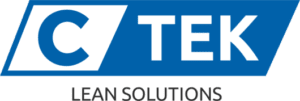The 3 Pillars of Kaizen
Kaizen is a Japanese business philosophy that strives to improve productivity and processes at all levels of the employee chain from the CEO to the assembly line workers. Kaizen, which means “improvement,” applies to manufacturing along with other industries such as banking and healthcare. C Tek explains the three main pillars of Kaizen and how they can help you improve efficiency, business, and performance.
Housekeeping
Housekeeping is the first pillar of Kaizen. It is the method of managing the workplace, called Gemba, to continually improve. The main concept of this pillar is that one service or product is made valuable before it moves onto the next stage. A fundamental framework shapes the pillar of housekeeping. First, the workplace needs to be clean, neat, and efficient. This way, materials and tools are easy to locate, use, and maintain so that there is no excess in production and also no shortage in materials and goods. The goal is to have all items easy to locate when they are needed. Any waste should be given a red tag and removed from the process to improve efficiency.
Elimination of Waste
Eliminating waste is the second main pillar of Kaizen. This pillar, also called Muda, is the Japanese term for “waste.” It refers to any resource that is currently being used but does not actually add value. Anything that does not add value, the pillar asserts, should be eliminated and removed from the process to ensure that only valuable services and products are offered. Waste can include transportation, over-processing, waiting, motion, defects, inventory, and overproduction. Essentially, eliminating waste follows the same principles as lean manufacturing. Waste is identified in the same primary eight categories. In Kaizen, the goal of eliminating waste is to improve the relationship and communication with suppliers to create Just in Time inventory management, which is also abbreviated as “JIT.” Additionally, the process should be streamlined to provide maximum value and benefit for customers.
Standardization
Standardization is the process of developing standards to which production is performed. Standardization involves producing products and services to pre-set specifications. Standardization is intended to eliminate waste, including the eight main types of waste identified in lean manufacturing. Additionally, standardization lowers costs, increases productivity, and creates more stable workflows. Before this pillar is implemented into practice, managers should make sure that it is appropriate for the business and accepted as a fair and achievable practice by everyone who is involved in the process. The pillar must be reviewed regularly after it is implemented to verify that it is working correctly. Ultimately, a good standard should create the safest, easiest, and most efficient way to perform a job.
For more information on Kaizen and how its pillars can improve your business operations, contact a C Tek expert.
